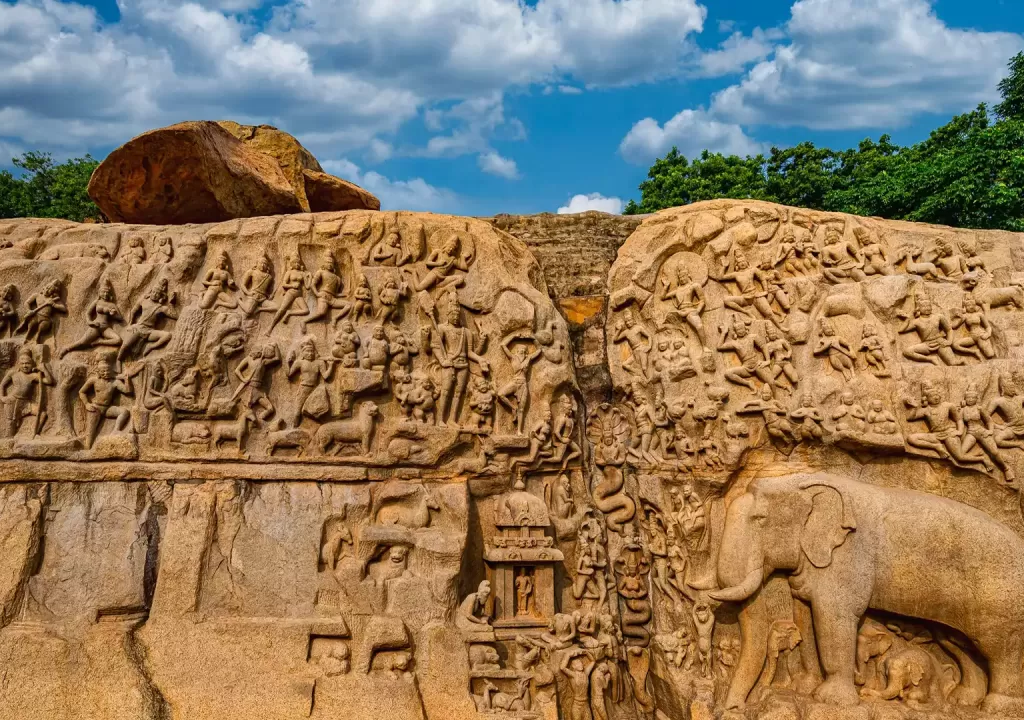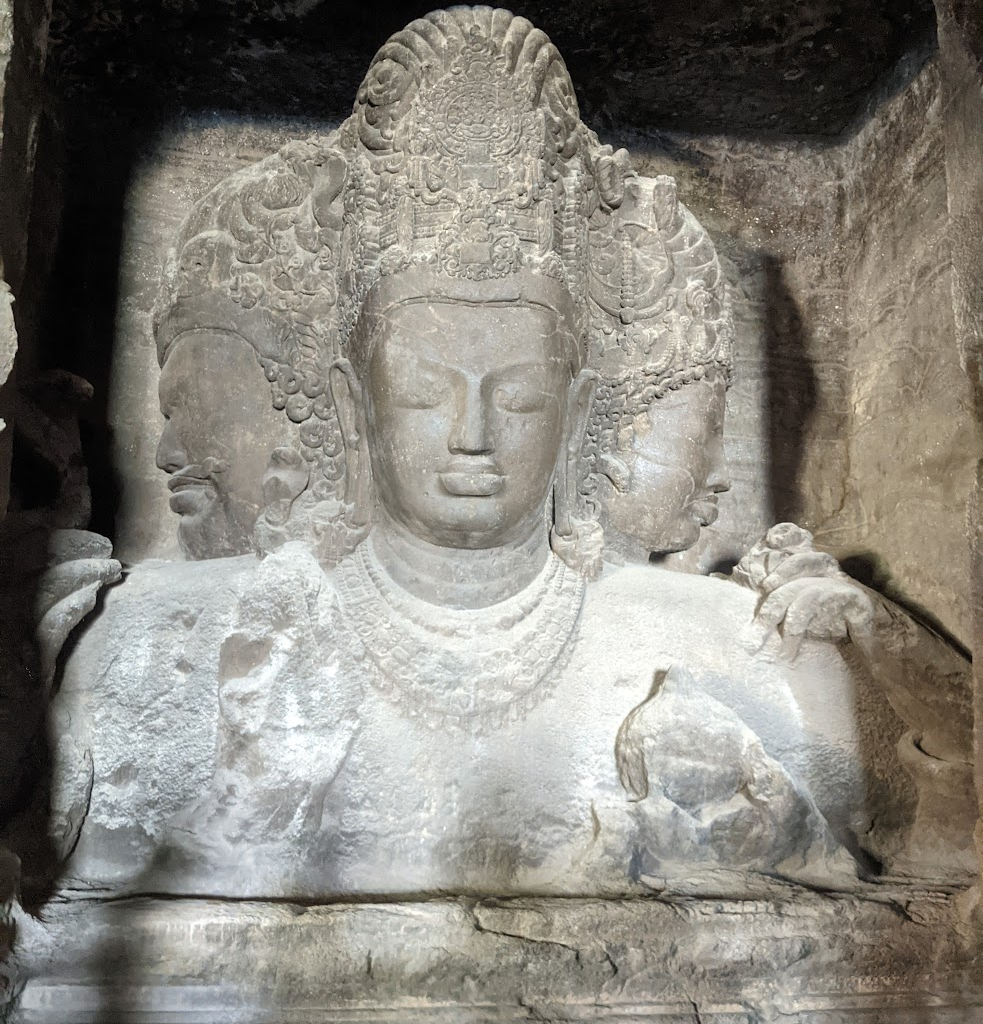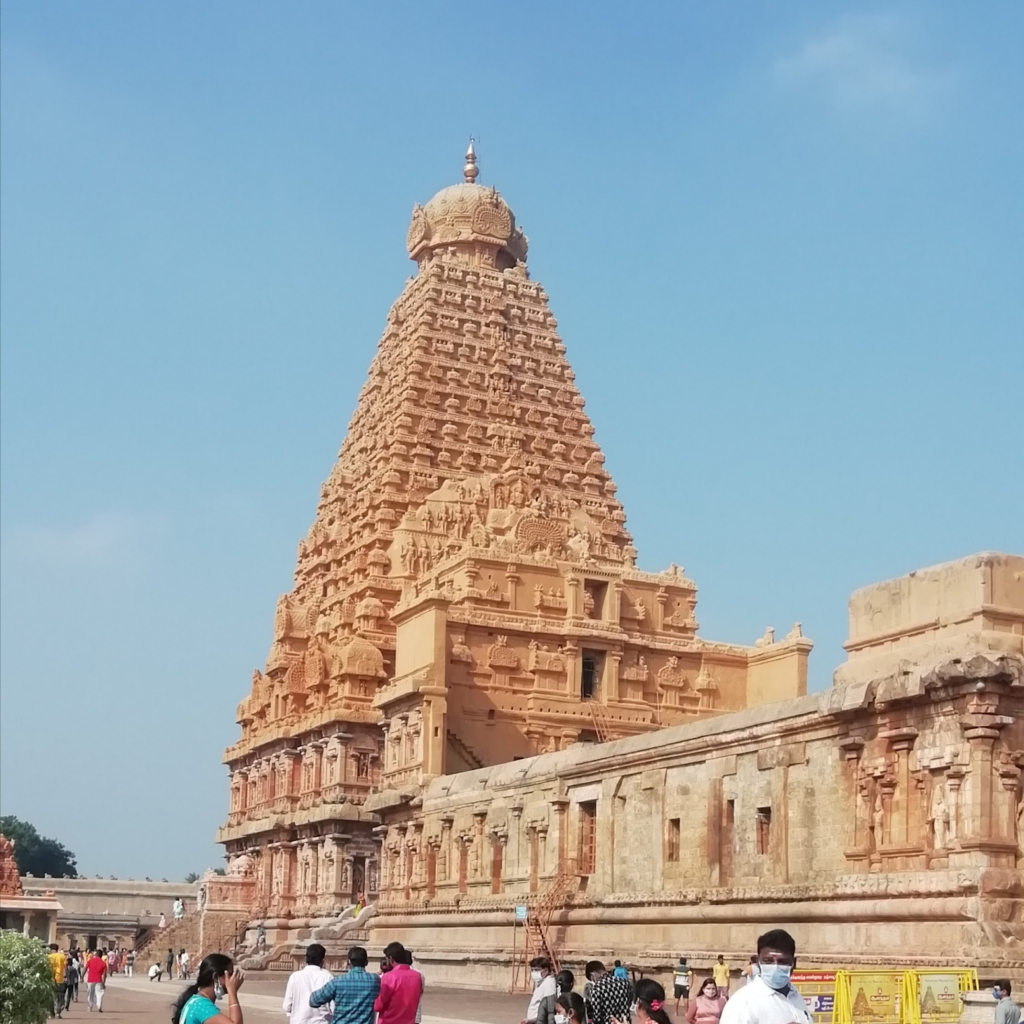
The Medieval School of Sculpture, a pivotal artistic movement spanning from the 5th to the 15th century, played a significant role in shaping the visual landscape of medieval Europe. This period witnessed the convergence of various styles and techniques, reflecting the dynamic interplay between religious fervor, socio-political structures, and artistic expression. One of the prominent features of this school was its deep-rooted connection to the Catholic Church, as many sculptures adorned cathedrals and religious structures, serving both a spiritual and didactic purpose. The sculptures of the Medieval School exhibit a characteristic blend of stylized forms, symbolic motifs, and a keen attention to detail, reflecting the prevailing cultural and religious ethos of the time. From the Romanesque to the Gothic periods, the evolution of sculptural styles mirrored societal changes, with an emphasis on conveying narratives from biblical stories and saints’ lives. Examining the sculptures from this era provides invaluable insights into the medieval worldview and the artistic craftsmanship that flourished within the context of religious patronage. For UPSC aspirants, a nuanced understanding of the Medieval School of Sculpture is crucial to grasp the intricate interplay between art, religion, and society during this transformative period in European history.
Instead of the classical dignity, sobriety, and simplicity, the sculpture is now more and more tending towards ornamentation, creating highly ornate art objects, with strange and unusual imaginary creatures, such as half-human, half-monsters.
- The characteristic of this new form of style of art is the difference with classical art in attitude, if not in skill and aptitude. Loveliness and idealization are still the artist’s passion as they were for artists in the early classical period, but the love of the ornate, decorative details is now dominant over classic simplicity.
- Examples of this form of sculptures during this time:
- One of the distinguishing monuments of sculpture during this time is the magnificent prayer hall or Chaitya, at Karle in the Poona district.
- The figure of Vrikshika, or a celestial damsel, from Gyraspur, in Gwalior, standing in a gracefully flexed pose, against a tree.
Contents
- 1 Pallavas Sculpture
- 2 Rashtrakutas Sculpture
- 3 Cholas Sculpture
- 4 Chandelas Sculpture
- 5 Palas Sculpture
- 6 Eastern Gangas Sculpture
- 7 Marble sculptures in Western India
- 8 Hoysalas Sculpture
- 9 Vijayanagara Empire Sculpture
- 10 Sculpture of Nayakas of Madurai and Thanjavur
- 11 Mughals Sculpture
- 12 FAQs
- 12.1 Q: What is the Medieval School of Sculpture, and when did it flourish in India?
- 12.2 Q: What are the prominent features of the Medieval School of Sculpture in India?
- 12.3 Q: Which regions in India are famous for the Medieval School of Sculpture?
- 12.4 Q: How did religion influence the Medieval School of Sculpture in India?
- 12.5 Q: What are some notable sculptures or sites associated with the Medieval School of Sculpture that one should be aware of for UPSC exams?
- 12.6 For Admissions, talk to our Mentor – 9811333901, 9811333782
Pallavas Sculpture
The artistic movement that thrived under the Pallava rulers of Kanchi produced several notable sculptures. These include the Mahishasurmardini in relief, Girigovardhana panel, Arjuna’s penance or the Descent of the Ganga, Trivikrama Vishnu, Gajalakshmi, and Anatasayanam, all of which were created under their patronage.
- The Arjuna’s penance scene is an exceptional representation of the elephant in Indian art.
- The artist skillfully depicted the celestial, temporal, and animal worlds with great detail. The composition in all these sculptures is unique and powerful, with a focus on a tall and slender physiognomical form, emphasized by thin and elongated limbs.
- The female figures in these sculptures are much lighter in appearance, with slender waists, narrow chests and shoulders, smaller breasts, sparse ornaments, garments, and generally submissive attitudes.
- The figure sculpture of the Pallavas is natural in pose and modeling.
- One of the great masterpieces of Pallava sculpture is the carving from Mahabalipuram, which depicts the goddess Durga engaged in a fierce battle with the buffalo-headed demon, aided by their respective armies.
- The sculpture shows her riding on her lion, rushing towards the powerful demon with great courage, while he moves away, watching for a moment to attack.
- Later Pallava sculpture exhibited greater attention to workmanship, with lighter anatomy and more developed artistic finishing.

Rashtrakutas Sculpture
During the middle of the 8th century, the Rashtrakutas took power from the Chalukyas and created one of the most magnificent wonders of medieval Indian art, the Kailasa temple at Ellora.
- This temple quarried out of a hill and solid rocks, is sculpted on a grand scale, featuring tall and powerfully built figures that reflect spiritual and physical poise, which is the signature Rashtrakuta style.
- The architectural rock sculpture from Cave No.29 at Ellora portrays the marriage of Siva and Parvati, with Siva holding the hand of the bashful Parvati at the center of the composition.
- Brahma, the creator, is actively engaged in stirring up the flames of the sacred fire on the right.
- The sculptor masterfully portrays the dignified grace of the divine couple and the gentle solemnity of the occasion.
- Another breathtaking sculpture at Ellora is a panel depicting Ravana shaking Mount Kailasa.
- The cave shrine at Elephanta is another great monument of the Rashtrakutas that contains the famous Mahishamurti sculpture.
- The three heads emanating from the same body represent three different aspects of Lord Shiva, with the central face showing him as the creator, the one on the left portraying him as the destroyer with a severe look, and the third, to the right, with a calm and pacific expression.


Cholas Sculpture
- Cholas succeeded the Pallavas and ruled South India from the 9th to 13th centuries A.D.
- Created great temples at Tanjavur, Gangai Kondo Cholapuram, and Darasurama, which are a treasure house of their art.
- Chola art not only influenced the art of Ceylon but also traveled to Java and Sumatra.
Brihadisvara Temple at Tanjavur
- Most mature and majestic of Chola temples.
- Sculpture shows a new maturity with gracefully modeled contours, flexed poses, delicate ornamentation, pleasing faces, and freshness.

Siva as the Irate God
- Example of Chola craftsmanship in the 11th century.
- Relief carving depicts Siva in a vigorous dance of fierce ecstasy after killing the elephant demon.
Later Phase of Chola Art
- Illustrated by sculpture showing Bhudevi or the earth goddess as the younger consort of Vishnu in the 13th century.
- Sculpture depicts a gracefully flexed attitude, holding a lily in the right hand, and left arm hanging along her side.
- Bronze sculpture tradition reached a high stage of development during this time.
- Sculptors were famous for their elegance, sensitive modeling, and balanced tension.
- Realism and attention to finer details reached their utmost perfection, with clear demarcation of body areas, sharp edges along the tibiae, pointed nose, and facial expressions as noticeable features.
Chandelas Sculpture
- The Chandellas were a ruling dynasty from 950 to 1100 A.D. in central India, known for constructing towering temples like the Kandariya Mahadev temple at Khajuraho.
- The temples at Khajuraho are famous for their human representations sculpted with endless variety.
- The sculptors at Khajuraho preferred slender, tall figures with considerable accentuation of linear details.
- The art of Khajuraho is known for its beauty, with sculptures of lovers locked in an embrace displaying throbbing passion and varying moods brought into relief by slight changes in expression and pose.
- The sculptures at Khajuraho are considered great masterpieces of Indian sculptural art, and can be admired both individually and cumulatively.
Palas Sculpture
- The Pala rulers in Bihar and Bengal (730-1110 A.D.) encouraged art and learning centers like Nalanda and Vikramasila, which gave scope for sculptors to express their art, inspired by religion.
- The Pala style is characterized by slim, graceful figures, elaborate jewelry, and conventional decoration, with sculptures from Bihar somewhat thicker and heavier than those from Bengal.
- The Pala rulers had connections with Java and this is evident in Hindu-Javanese sculptures and paintings from Nepal, Kashmir, Burma, and Thailand.
- The later phase of Pala art shows some stylization, but the tradition continued under the Sena rulers in the 12th century until the Islamic rulers took over the country.
- An excellent example of Pala sculpture is the personified river goddess Ganga from Mahanad in West Bengal. The figure stands gracefully under a Kalpataru tree on a lotus, holding a water vessel to symbolize prosperity. She is adorned with profuse jewelry and wears a lower garment reaching her ankles. The workmanship is of a high order and the figure is expressive.
Eastern Gangas Sculpture
- The Eastern Ganga dynasty kings built monumental temples at Bhubaneswar, Puri, and Konarak, embellished with sculptures.
- A school of sculpture developed in Odisha in the middle of the 9th century AD, which took delight in the lovely forms of women.
- Many representations of young and charming female figures can be found on the walls of Odisha temples.
- These sculptures of women are shown decorating the walls and temples, often holding onto branches of trees and standing on floral ornaments.
- The temple at Konarak was built in the middle of the 12th century and dedicated to the sun god, Surya. It is depicted as a huge stone chariot on immense wheels, dragged by seven horses.
- On the plinth of the Jagmohana of the temple, at a height of about 50 feet from the ground, are installed colossal celestial musicians facing in all directions, playing different musical instruments.
- Narasimha, the great builder of the Konarak temple, is shown in scenes appreciating literature, displaying tolerance for faith, and worshipping Jagannath.
- The image of Surya from the Sun Temple at Konarak drawn by seven rearing horses is of monumental proportions.
- The Odisha artist produced images that were faultless in the perfection of their form and vitality, culminating in the famous sun temple at Konarak.

Marble sculptures in Western India
- The Jain temples at Mount Abu, Girnar, and Palitana in Western India are decorated with intricately carved sculptures reflecting the traditions of marble sculpture in Gujarat.
- A beautiful image of the four-armed Vishnu, the Hindu god of preservation, was created in the 13th century A.D. with characteristic attributes such as the mace, discus, and conch shell. The hand holding the lotus is missing.
- The weapons are depicted as personified attendant figures on the base. Decorative motifs and miniature images of Brahma and Siva are seen on either side within rectangular niches.
- The Dilwara temples at Mount Abu are sculptural masterpieces in the Jain tradition and not just monuments of architecture. They are stacked one upon the other, forming one of the sculptural wonders of the world.
- The ceiling of the Dilwara temple is a masterpiece of intricate sculptural carvings, making it one of the world’s finest examples of this type of art.

Hoysalas Sculpture
- In the carving depicting Lord Krishna holding Govardhana hill to save the people of Gokul from Indra’s wrath, a splendid example of Hoysala’s sculptural art is portrayed. The youthful Krishna holds the mountain with its forest and animal kingdom on his left hand, sheltering the entire population of Gokul, including the cows.
- In the sculpture of the period, the artist takes delight in the fantastic mass of decoration and ornamentation, which becomes more important than the human figure. The human body almost completely disappears, as seen in the sculpture of a woman holding a fly-whisk and other figures.
- The Hoysala temples built at Halebidu and Belur are highly embellished, with emphasis placed more on ornamentation than movement or the grace of the human body. The sculptures are somewhat squat and short, yet pleasing to behold.
Vijayanagara Empire Sculpture
- The last great Hindu Kingdom in South India was Vijayanagara, which existed from circa 1336 to 1565 A.D.
- During this period, several beautiful temples were erected at places like Tadpatri, Hampi, Kanchipuram, etc., and the carvings in these temples show the Chola and Chalukyan art traditions.
- Favorite themes during this period included representations in narrative forms of the Ramayana and Krishna, Bal Lila.
- The Vijayanagara emperors had excellent portraits carved by sculptors to immortalize them in the vicinity of their favorite deities.
- Krishnadevaraya is an example of a fine portrait at one of the Gopuras at Chidambaram.
- The sculptors of Tirumylnayak and the Gopuram and courts of Meenakshi temple at Madurai produced amazingly virile sculptures in titanic proportions, representing the final flicker of this period.
- During the Vijayanagara period, the ornamentation tended to become more elaborate, interfering with the smooth rhythm of the body, and the postures became more rigid.
- The sculptors in this period have combined the likeness of the facial features with certain elements of idealization.
- The idealization is further observed in the manner the physical body is modeled to appear imposing as well as graceful, as seen in life-size standing portrait statues of Krishnadevaraya found at Tiruppathi.
Sculpture of Nayakas of Madurai and Thanjavur
- The 17th century was a great period of titanic work under the Nayaka of Madurai and Tanjavur.
- During this period, the animal motif with fantastic detail can be seen in outstanding sculptures such as those at Srirangam temple in Trichinapally.
- Though stylized, this art is full of vitality.
- The sculptures include a pair of rampant, furious horses whose heads support the pillars, carved with great skill and vigor.
- The riders are shown in realistic poses trying to control them.
- Each sculpture is realistic, though the concept is fantastic.
Mughals Sculpture
- Despite the continuation of traditions of stone sculptures, no major sculpture movement survived under the Mughal and other Muhammadan rulers.
- While the Muhammadan rulers gave great impetus to architecture, sculptures are rarely found, and even those available are products of local chieftains.
- Under the British regime, no proper patronage was provided to sculptors, and the whole tradition of Indian art almost came to a standstill.
FAQs
Q: What is the Medieval School of Sculpture, and when did it flourish in India?
A: The Medieval School of Sculpture refers to the artistic style and techniques used in sculpture during the medieval period in India. It flourished from the 6th to the 18th centuries, encompassing various dynasties and regions.
Q: What are the prominent features of the Medieval School of Sculpture in India?
A: The Medieval School of Sculpture is known for its intricately detailed and highly stylized sculptures, characterized by a mix of Hindu, Buddhist, and Jain motifs. These sculptures often feature gods, goddesses, mythical creatures, and intricate ornamentation.
Q: Which regions in India are famous for the Medieval School of Sculpture?
A: Several regions in India were known for their distinctive contributions to the Medieval School of Sculpture. Some prominent centers include Khajuraho in Madhya Pradesh, Konark in Odisha, Belur and Halebidu in Karnataka, and Ajanta and Ellora in Maharashtra.
Q: How did religion influence the Medieval School of Sculpture in India?
A: Religion played a significant role in shaping the themes and subjects of Medieval Indian sculpture. Hindu, Buddhist, and Jain religious iconography was prevalent in the sculptures of this period, depicting deities, bodhisattvas, and Jain Tirthankaras.
Q: What are some notable sculptures or sites associated with the Medieval School of Sculpture that one should be aware of for UPSC exams?
A: UPSC candidates should be familiar with key sculptures and sites, such as the erotic sculptures of Khajuraho, the Sun Temple of Konark, the Hoysala temples of Belur and Halebidu, and the rock-cut caves of Ajanta and Ellora. These sites and sculptures represent the diverse artistic and religious heritage of the Medieval School of Sculpture in India.
For UPSC Prelims Resources, Click here
For Daily Updates and Study Material:
Join our Telegram Channel – Edukemy for IAS
- 1. Learn through Videos – here
- 2. Be Exam Ready by Practicing Daily MCQs – here
- 3. Daily Newsletter – Get all your Current Affairs Covered – here
- 4. Mains Answer Writing Practice – here
Visit our YouTube Channel – here

